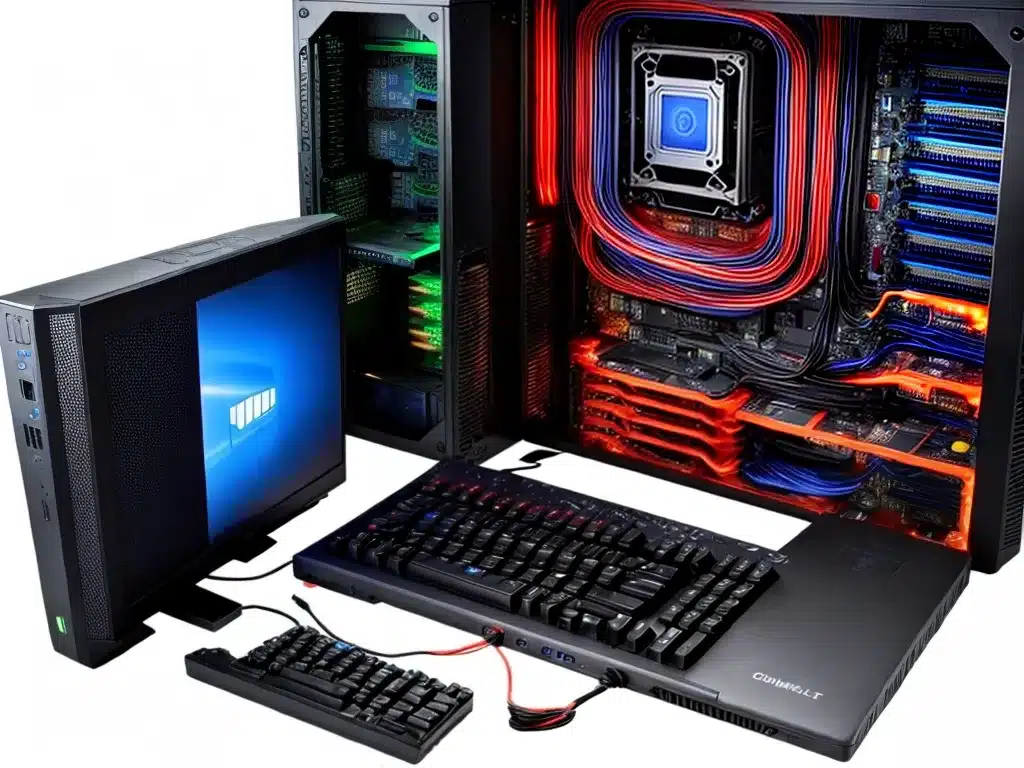

Computer Won’t Turn On? Here’s How to Troubleshoot and Fix It
Having your computer suddenly stop turning on can be frustrating and concerning. However, with some basic troubleshooting, you can often identify and resolve the issue yourself. Here are the main steps I would take to diagnose and fix a computer that won’t power on:
1. Check the Power Cable and Electrical Outlet
The first thing to check is the simple stuff. Make sure the power cable is firmly plugged into the back of the computer and the wall outlet. Try using another power cable if you have one available. Plug the computer into a different electrical outlet in case the original one went bad. Also, check that the outlet is working by plugging in a lamp or phone charger.
This is the easiest potential fix, as a loose cable or faulty outlet could be preventing the computer from receiving power.
2. Inspect the Power Supply Unit
The next component to examine is the power supply unit (PSU). This box inside the computer converts outlet power into stable voltages that the computer components need.
- Carefully open up the computer case and look for any signs of damage, burnt smells, or disconnected cables from the PSU.
- If possible, swap in a known-good PSU from another computer to test if yours is defective.
- Listen for fan noise or other indications the PSU is running when you press the power button. No noise likely means a bad PSU.
Faulty power supplies are one of the most common reasons a computer won’t start. Replacing the PSU may be all that’s needed to get your computer running again.
3. Check Internal Connections
With the computer case open, inspect all the internal cable connections. Make sure the power switch, reset switch, and LED wires are properly connected from the case to the motherboard. Re-seat memory modules, expansion cards, and data cables in case any became loose.
Loose internal cables are an easy thing to fix that could be preventing the computer from powering on. Go over them methodically to rule out a connection issue.
4. Test the Power Switch
The power switch itself could also be faulty and prevent the computer from turning on.
- Use a screwdriver or paperclip to briefly short the power switch pins on the motherboard instead of pressing the case power button.
- If the computer starts up, you know the problem is with the case power button or wiring.
- You can replace the power switch or simply short the power pins with a screwdriver going forward.
5. Remove Extra Hardware and Peripherals
If the issue persists, remove any extra hardware and peripherals not vital to operation. This includes USB drives, discs in optical drives, expansion cards, and externally connected devices.
Then try booting the computer up again with just the core components installed. If it powers on now, plug peripherals back in one at a time to isolate the problem device.
6. Reset the BIOS
Resetting the motherboard BIOS (basic input/output system) to default settings can help resolve boot issues. Locate the BIOS reset or clear CMOS jumper on the motherboard, move it to the reset position for a few seconds, then move it back. Alternatively, remove and re-insert the CMOS battery for a minute.
Resetting the BIOS will undo any settings changes that could be preventing startup and revert to failsafe defaults.
7. Test the RAM
Faulty memory (RAM) modules can sometimes cause sudden startup failures. Open RAM slots and try removing and re-inserting the RAM sticks one at a time. If the computer works after removing a specific stick, that indicates it has failed.
Alternatively, swap in known-good RAM from another computer if available for troubleshooting. Bad RAM could be your issue if the computer runs after the change.
8. Check the CPU
While less likely, a defective CPU (processor) can also lead to startup problems. If possible, swap in another compatible CPU chip to test with. More advanced troubleshooting like testing the CPU in another motherboard may be required.
If the computer works after CPU replacement, this indicates the original processor stopped functioning.
9. Attempt an External Boot
If the computer still won’t boot, try using a Linux live CD, Windows install disc, or bootable USB drive. Booting externally bypasses the internal hard drive and helps determine if it is a software issue preventing startup.
If the computer boots from the external media, you know the core hardware is still working properly. The internal hard drive with the OS installed is likely failing and preventing normal boot.
10. Motherboard Failure
At this stage, the most likely remaining culprit is a failed motherboard if all above steps fail to get the computer powering on. Motherboard failure can happen due to power surges, liquid spills, or normal wear and tear over time.
Replacing the motherboard or repairing it through a service center are the only options if confirmed to be defective.
In Summary:
- Check power connections
- Inspect the PSU
- Re-seat internal cables
- Test the power switch
- Remove peripherals
- Reset the BIOS
- Test the RAM
- Check the CPU
- Attempt external boot
- Motherboard replacement/repair
Thoroughly working through these troubleshooting steps should get your computer successfully powering back on in most situations. Be methodical and patient, testing one component at a time. If the issue still persists after all steps, the motherboard itself is likely defective and needs professional repair or replacement.












